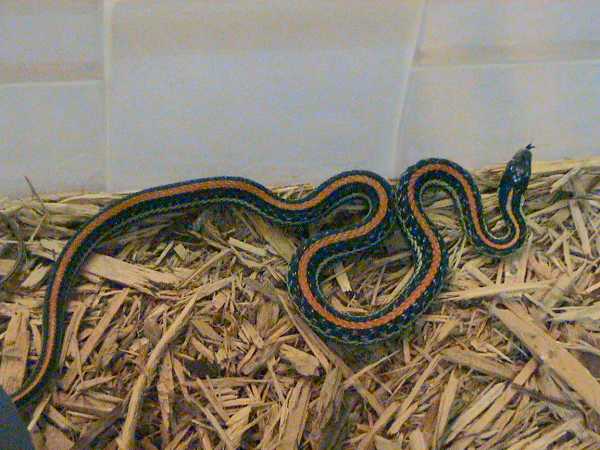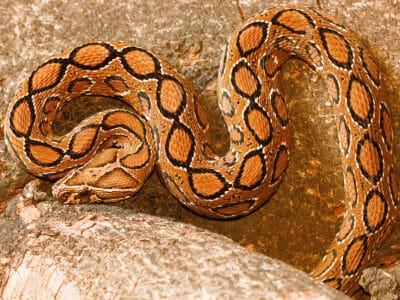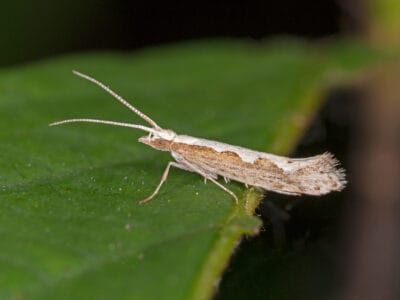Texas Garter Snake
.jumbotron {
background-image: url(“https://a-z-animals.com/media/2022/05/Thamnophis_sirtalis_annectens-400×300.jpg”);
}
}
@media only screen and (min-width: 641px) and (max-width: 920px) {
.jumbotron {
background-image: url(“https://a-z-animals.com/media/2022/05/Thamnophis_sirtalis_annectens-470×370.jpg”);
}
}
@media only screen and (min-width: 921px) {
.jumbotron {
background-image: url(“https://a-z-animals.com/media/2022/05/Thamnophis_sirtalis_annectens.jpg”);
}
}
If you handle one of the snakes, it will defensively emit a foul-smelling musk that can get on your hands and other surfaces and permeate your home.
Texas Garter Snake Scientific Classification
- Kingdom
- Animalia
- Phylum
- Chordata
- Class
- Reptilia
- Order
- Squamata
- Family
- Colubridae
- Genus
- Thamnophis
- Scientific Name
- Thamnophis sirtalis annectens
Read our Complete Guide to Classification of Animals.
Texas Garter Snake Conservation Status
Texas Garter Snake Facts
- Fun Fact
- If you handle one of the snakes, it will defensively emit a foul-smelling musk that can get on your hands and other surfaces and permeate your home.
- Estimated Population Size
- Over 1,000,000
- Most Distinctive Feature
- Bright orange or red stripe running along the back from the neck to the tail tip
- Distinctive Feature
- Yellow or white stripe on each side of its body
- Litter Size
- 20 – 40 live babies
- Habitat
- sometimes found near water sources likeThey’re sometimes found near streams, rivers and ponds. They use damp soil, large plants, brush piles, stacked wood and other debris for cover.
- Diet
- Carnivore
- Favorite Food
- Insects, amphibians, snails, and earthworms
- Common Name
- Garden snake
Texas Garter Snake Physical Characteristics
- Skin Type
- Scales
- Age of Sexual Maturity
- 1.5 – 2 years
- Venomous
- No
- Aggression
- Low
This post may contain affiliate links to our partners like Chewy, Amazon, and others. Purchasing through these helps us further the A-Z Animals mission to educate about the world’s species..

Discover alligator-eating snakes, spiders larger than your phone, and 1000 more incredible animals in our daily FREE email.
View all of the Texas Garter Snake images!
Texas garter snakes are uncommon, but where found they provide helpful pest control for gardens and residential areas.
The Texas garter snake (Thamnophis sirtalis annectens) is one of 13 subspecies of the common garter snake native to North America. This subspecies is found in central Texas, Kansas, and sometimes South Dakota. They are not venomous to humans, yet have enough venom in their saliva to subdue small prey. When one of these snakes is found, it is best to leave it alone because in residential areas, gardens and greenhouses it helps control pest populations. This is how the snake earned the common name “garden snake.”
In most regions, it is illegal to take a Texas garter snake out of the wild to keep as a pet. But in captivity, such as in zoos, the snakes can have a lifespan of six to 10 years. This is much longer than their average lifespan in the wild of only two years. The garden snake reaches sexual maturity at between 1.5 years to 2 years, but in their natural habitat, many do not live long enough to reproduce.
5 Amazing Texas Garter Snake Facts
- Being oviparous, Texas garter snakes give birth to 20 to 40 live and fully independent baby snakes
- Baby and juvenile garden snakes are more likely to strike out at humans than adult snakes of the same species if they feel threatened
- Texas garter snakes are surprisingly good at catching small fish and tadpoles using lightning-fast reflexes
- Besides aiding humans by controlling pests, these snakes will also feed on larger decaying animals
- Like other common garter snakes, the Texas garter snake is venomous to its prey but not to humans
Where to Find Texas Garter Snakes
Texas garter snakes are named for the primary region to which they are native, central Texas. But the snakes are sometimes found in sparse populations in Kansas and South Dakota. They are among the least common garter snakes, but are sometimes found near water sources like streams, rivers, and ponds. They like using damp soil, large plants, brush piles, stacked wood, and other debris for cover.
button.pulse {
transform: scale(1); animation: pulse 2s infinite;
box-shadow: 0 0 0 0 rgba(11, 247, 25, 1);
}
@keyframes pulse {
0% { transform: scale(0.90); box-shadow: 0 0 0 0 rgba(11, 247, 25, 0.5); }
60% { transform: scale(1); box-shadow: 0 0 0 15px rgba(11, 247, 25, 0); }
100% { transform: scale(0.90); box-shadow: 0 0 0 0 rgba(11, 247, 25, 0); }
}
Scientific Name
The Texas garter snake’s scientific name is Thamnophis sirtalis annectens. It is part of the class Reptilia and the family Colubridae. The first two terms of its scientific name comes from the Greek thamnos for “bush” and ophio for “snake,” in addition to sirtalis, from the Latin word for “garter.” Annectens is derived from the Latin words for “toward” and “connecting.”
Population & Conservation Status
The Texas garter snake’s species, Thamnophis sirtalis, is listed as being of “least concern” by the International Union for Conservation of Nature’s (IUCN) Red List of Threatened Species. The species as a whole, including the subspecies Texas garter snake (Thamnophis sirtalis annectens) has a stable population. It is believed that the population exceeds 1,000,000 for all common garter snakes in North America and northern Mexico.
Appearance & Description
Texas garter snakes are identifiable through their color patterns, ranging from almost-solid to distinctively checkered or blotched. Their base colors are specifically a dark olive green, dark brown or black patterned body with a bright orange or red primary stripe down its back. There are also two yellow stripes, one down each side of its body. The snake’s underside is typically a cream or white color.
How to identify the Texas garter snake:
- Dark olive green, brown, or black patterned body, ranging from solid to checkered
- Bright orange or red stripe running along the back from the neck to the tail tip
- Yellow or white stripe on each side of its body
- White or yellow-colored underside

Texas Garter Snake Venom: How Dangerous Are They?
Texas garter snakes, like other common garter snakes, are not venomous to humans. However, they do have enough venom in their saliva to subdue their small prey. The garden snakes do not have fangs, so they do not inject their venom. Instead, the toxic saliva enters the prey’s bloodstream by entering through the bite wound.
If a human is bitten by a Texas garter snake, the teeth may not puncture the skin at all. If there is a puncture and the saliva enters the wound, the person will typically experience no symptoms or just slight irritation and temporary swelling. If you are bitten by a Texas garter snake, simply wash the region with warm, soapy water. This will help you avoid infection from bacteria common to a snake’s mouth. If you notice signs of anaphylaxis, such as nausea, vomiting, or dizziness after a garden snake bite, call your doctor for additional care instructions.
Texas Garter Snake Behavior and Humans
Texas garter snakes are so non-threatening to humans that some people keep them as pets. Most local areas prohibit taking these checkered and striped snakes out of the wild, however. For this reason, you should not try to keep one as a pet without verifying your local and state laws. If you want to see the snakes close-up, you can visit them at zoos housing this species, such as the Dallas Zoo in Dallas, Texas.
If you handle one of the snakes, it will defensively emit a foul-smelling musk that can get on your hands, clothes, and other objects. The smell is hard to clean away and can permeate a home. This is one of the animal’s defense mechanisms and it can range from mildly foul to extremely malodorous, based on the snake’s diet. For good reason, garden snakes are considered the smelliest type of snake.
The snake’s diet consists of creatures that humans consider pests, like mice, grasshoppers, and slugs. For this reason, it is beneficial to humans to leave the snakes in gardens, greenhouses, or residential areas where found. Garden snakes’ habitats are generally parts of central Texas, Kansas, and South Dakota where they have access to plenty of food. So if you see one in your garden, it is actually helping you to keep your plants healthy. It is also likely to keep mice out of your house.
View all 74 animals that start with T
Texas Garter Snake FAQs (Frequently Asked Questions)
Are Texas garter snakes venomous?
Texas garter snakes are not venomous to humans. But they do have enough venom in their saliva to subdue small prey. The snake has no fangs to inject their venom. Instead, this low poisonous dose enters the prey’s bloodstream directly through the snakes saliva and the bite wound made with small teeth.
How do Texas garter snakes hunt?
Like other common garter snakes, the Texas garter snake ambushes its prey. The snake has a keen sense of smell and excellent vision to detect insects, amphibians, small rodents and other prey. It uses lightning-fast reflexes to lash out at the passing meal.
Are Texas garter snakes aggressive?
Texas garter snakes are docile around humans but aggressive to prey. Humans can easily handle one of these snakes without fear. Sometimes the Texas garter will bite a human, but that bite is not generally dangerous to people. The snakes do emit a foul-smelling musk from its cloaca, however.
Where do Texas garter snakes live?
Texas garter snakes live mostly in the state of Texas. But they are also often found in Kansas and as far north as South Dakota. Within these regions, the snake’s preferred habitat is near a water source. They are usually seen beneath plants, in damp soil next to streams, or under wood piles or other debris.
What do Texas garter snakes eat?
Texas garter snakes eat the same types of foods as other common garter snakes. Their diet includes insects, earthworms, mollusks and amphibians. They also like small animals like birds, rodents and fish. Texas garter snakes are actually great at catching small fish and tadpoles.
Can a Texas garter snake hurt you?
A Texas garter snake cannot usually hurt you. They have tiny teeth but no fangs. These teeth are sometimes capable of puncturing human skin but do not cause major wounds. The biggest threat to humans is entry of bacteria from the snake’s mouth into the bite wound, causing an infection. If some of their venom enters the wound, you may experience temporary swelling and irritation.
Sources
- Wikipedia, Available here: https://en.wikipedia.org/wiki/Texas_garter_snake
- iNaturalist , Available here: https://inaturalist.ca/taxa/28374-Thamnophis-sirtalis-annectens
- Snake Snape, Available here: https://www.snakesnap.co/texasgartersnake
- Ecos Fish & Wildlife Service, Available here: https://ecos.fws.gov/ecp/species/3086
- Digital Stephen F. Austin State University, Available here: https://digital.sfasu.edu/digital/collection/Herpetology/id/382/
- Animalia Bio, Available here: https://animalia.bio/texas-garter-snake
- Wikidata, Available here: https://www.wikidata.org/wiki/Q7708250
- Wildlife of North America, Available here: https://www.wildlifenorthamerica.com/Reptile/Texas-Garter-Snake/Thamnophis/sirtalis-annectens.html
- The Nature of Things, Available here: https://www.thenatureofthings.blog/2015/06/backyard-nature-wednesday-texas-garter.html
- En Academic, Available here: https://en-academic.com/dic.nsf/enwiki/2531402
- Goliad Farms, Available here: https://goliadfarms.com/texas-garter-snake/
- Austin Pest Wildlife, Available here: http://www.austinpestwildlife.com/garter-snake.html#:~:text=The%20average%20lifespan%20of%20common,but%20this%20is%20very%20rare
- IUCN Red List, Available here: https://www.iucnredlist.org/species/62240/68308267















